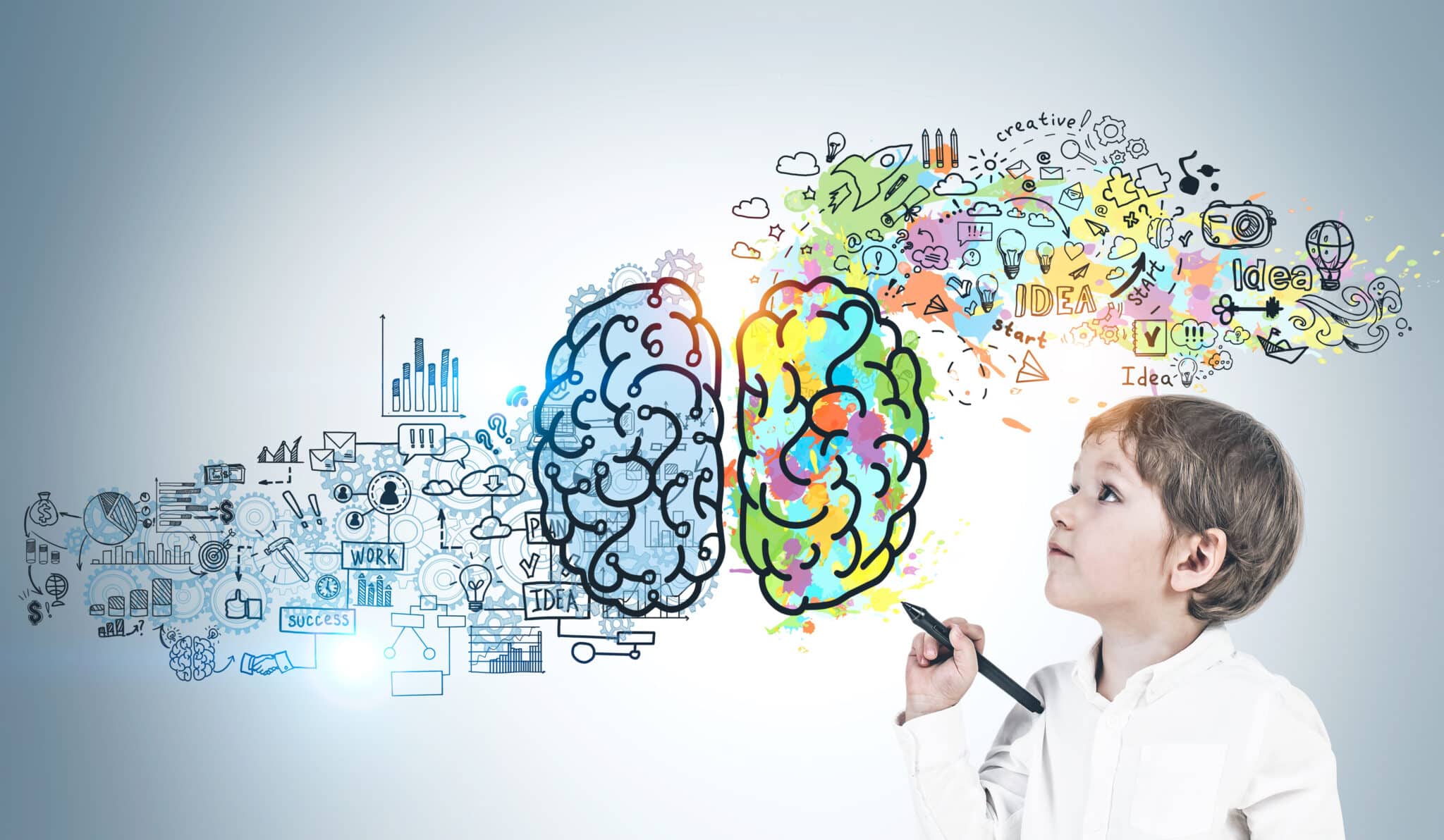The purpose of the article is to provide insights and practical guidance for navigating interactions with autistic individuals within the framework of neurodiversity. It aims to promote acceptance, understanding, and inclusion by highlighting strategies for creating inclusive environments, bridging communication gaps, and celebrating the unique strengths and perspectives of autistic individuals. Through awareness and actionable advice, the article seeks to empower readers to foster meaningful connections and support within their communities.

I. Introduction
In our increasingly diverse society, embracing neurodiversity is essential for fostering inclusion and understanding. Neurodiversity acknowledges the wide spectrum of cognitive variations, including autism, which enrich our communities and workplaces. Interacting with autistic individuals requires sensitivity and an appreciation of their unique perspectives. This article explores nuanced approaches to engaging with autistic individuals, offering practical strategies for creating supportive environments and meaningful connections.

II. Understanding Neurodiversity
Neurodiversity refers to the spectrum of cognitive variations within the human population, encompassing differences in thinking, learning, and processing information. It emphasizes the idea that neurological differences, such as autism, ADHD, dyslexia, and others, are natural variations of the human genome rather than disorders to be fixed or cured. Embracing neurodiversity promotes acceptance, inclusion, and appreciation of the unique strengths and perspectives that individuals with diverse neurotypes bring to society.
Neurodiversity encompasses a wide range of cognitive styles and perspectives, each offering valuable insights and contributions to our communities. Autistic individuals, for example, may possess exceptional attention to detail, pattern recognition abilities, and innovative thinking. By recognizing and embracing neurodiversity, we can create environments that celebrate individual differences and foster a culture of respect, empathy, and collaboration.
Practical Approaches to Engaging with Autistic Individuals

Empathy and Understanding: Approach interactions with autistic individuals from a place of empathy and understanding. Take the time to listen to their perspectives, validate their experiences, and respect their boundaries.
Clear Communication: Use clear, concise language and provide visual aids or written instructions to support understanding. Avoid using ambiguous or figurative language that may be confusing.
Sensory Considerations: Be mindful of sensory sensitivities and create environments that accommodate individual needs. This may include providing quiet spaces, minimizing visual and auditory distractions, and allowing for sensory breaks when necessary.
Structured Routines: Establish predictable routines and schedules to provide a sense of security and stability for autistic individuals. Clearly communicate any changes or disruptions in advance to help minimize anxiety.
Flexibility and Adaptability: Be flexible and willing to adapt your communication and interaction style to meet the needs of autistic individuals. Avoid rigid expectations and embrace alternative methods of expression and engagement.
Positive Reinforcement: Use positive reinforcement and praise to acknowledge and encourage desired behaviors. Focus on strengths and accomplishments rather than shortcomings or challenges.
Social Skills Development: Provide opportunities for social skills development through structured activities, role-playing, and peer interactions. Offer guidance and support to help autistic individuals navigate social situations and develop meaningful connections.
Parenting Tips: For parents of autistic children, prioritize open communication, patience, and understanding. Seek out support groups, resources, and therapy options to help navigate the challenges and celebrate the successes of raising an autistic child.
Therapy Options: Explore therapy options such as Applied Behavior Analysis (ABA), Occupational Therapy (OT), Speech Therapy, and Social Skills Training to support the development of communication, sensory processing, and social skills.
Education and Advocacy: Educate yourself and others about autism spectrum disorders, including common characteristics, strengths, and challenges. Advocate for inclusive practices and policies in schools, workplaces, and communities to ensure equal opportunities and support for autistic individuals.
III. Breaking Down Barriers: Strategies for Inclusive Environments
Autistic individuals often face significant barriers in mainstream society due to a lack of understanding, accommodation, and support. These barriers can manifest in various aspects of daily life, including education, employment, social interactions, and access to healthcare. By identifying and addressing these barriers, we can create more inclusive environments that promote the well-being and success of autistic individuals.
In busy environments with bright lights, loud noises, and strong smells, autistic individuals may experience sensory overload, leading to stress, anxiety, and discomfort. Communication challenges, both verbal and nonverbal, can further hinder social interactions and contribute to misunderstandings and isolation. Negative stereotypes and misconceptions about autism can exacerbate social stigma, discrimination, and exclusion, perpetuating barriers to inclusion.
Creating inclusive environments begins with understanding and addressing the specific needs and challenges faced by autistic individuals. Sensory-friendly design plays a crucial role in minimizing sensory stimuli, providing quiet spaces, and offering sensory-friendly materials and textures. Clear communication is essential, utilizing concise language and visual supports such as visual schedules and social stories to enhance understanding and communication.
Sensory breaks and opportunities for self-regulation can help autistic individuals manage sensory input and maintain emotional regulation. Flexibility and accommodation are key, allowing for individualized supports such as alternative communication methods, breaks, and flexible work or school schedules. Education and awareness initiatives promote understanding, acceptance, and inclusion, challenging stereotypes and fostering positive attitudes towards neurodiversity.
Practical Tips and Strategies for Inclusive Environments:
- Sensory-Friendly Design: Minimize sensory stimuli, provide quiet spaces, and offer sensory-friendly materials.
- Clear Communication: Use concise language and visual supports to enhance understanding.
- Sensory Breaks: Allow for breaks and opportunities for self-regulation.
- Flexibility and Accommodation: Be flexible and accommodating of individual needs and preferences.
- Education and Awareness: Promote understanding, acceptance, and inclusion through education and awareness initiatives.
- Training and Support: Provide training and support for educators, employers, healthcare professionals, and community members.
- Promotion of Acceptance: Foster a culture of acceptance, diversity, and inclusion by challenging stereotypes and promoting positive attitudes towards neurodiversity.

IV. Bridging Worlds: Finding Common Ground with Autistic Individuals
Interacting with autistic individuals requires a nuanced approach that emphasizes mutual understanding, respect, and accommodation. Rather than expecting autistic individuals to conform entirely to neurotypical social norms, it’s essential to meet them halfway by embracing their unique perspectives and adapting our communication and support strategies accordingly. This section explores the concept of bridging worlds, drawing on personal stories and experiences to illustrate successful interactions and mutual understanding.
Many autistic individuals navigate a world that may not always understand or accommodate their needs fully. However, by meeting them halfway, we can bridge the gap and foster meaningful connections. Personal anecdotes offer powerful insights into the ways in which individuals with diverse neurotypes navigate social interactions, overcome challenges, and find common ground with others.
Adapting communication styles is key to fostering effective and meaningful interactions with autistic individuals. This involves being mindful of their preferences, such as using clear, concrete language and avoiding ambiguous or figurative language that may be confusing. Additionally, providing visual supports and alternative communication methods can enhance understanding and facilitate more successful communication exchanges.
Supporting autistic individuals while respecting their individual differences requires a person-centered approach that prioritizes autonomy and self-determination. This involves actively listening to their needs, preferences, and concerns, and providing support that is tailored to their unique strengths and challenges. By offering guidance, encouragement, and accommodations that align with their individual needs, we can empower autistic individuals to thrive and succeed in their personal and professional lives.
Practical Tips for Bridging Worlds:
- Embrace Neurodiversity: Recognize and celebrate the unique perspectives and strengths of autistic individuals.
- Active Listening: Listen actively and attentively to their needs, preferences, and concerns.
- Adapt Communication Styles: Use clear, concrete language and provide visual supports to enhance understanding.
- Respect Autonomy: Prioritize autonomy and self-determination by involving autistic individuals in decision-making processes.
- Provide Tailored Support: Offer support and accommodations that are tailored to their individual strengths and challenges.
- Celebrate Successes: Acknowledge and celebrate their achievements and successes, no matter how small.
By embracing the concept of bridging worlds and adopting a person-centered approach to interaction and support, we can create environments that foster mutual understanding, respect, and inclusion for autistic individuals.

V. Situational Sensitivity: Tailoring Support for Autistic Individuals
Supporting autistic individuals effectively requires a deep understanding of the unique factors that influence their experiences and needs in different situations. This section delves into the importance of considering situational factors when providing support, offering examples of how support strategies may vary based on age, cultural background, and personal preferences. Emphasis is placed on adopting a flexible and person-centered approach to support that honors individual differences and promotes inclusivity.
Situational factors play a significant role in shaping the support needs of autistic individuals. Age, for example, can influence the types of support required, with children often benefiting from structured routines and visual supports, while adults may require support with employment, independent living skills, and social relationships. Additionally, cultural background can impact an individual’s perception of autism and their willingness to seek support, highlighting the importance of culturally sensitive approaches to intervention and support.
Examples of support strategies that may vary based on situational factors include:
- Age: For children, support strategies may include structured routines, visual schedules, and social skills training, while adults may benefit from vocational training, job coaching, and assistance with independent living skills.
- Cultural Background: Respect for cultural values and beliefs is essential when providing support to autistic individuals from diverse cultural backgrounds. This may involve collaborating with cultural liaisons or community leaders to ensure that support services are culturally appropriate and accessible.
- Personal Preferences: Recognizing and respecting individual preferences is key to tailoring support effectively. Some autistic individuals may prefer verbal communication, while others may communicate more effectively through written or visual means. Similarly, some individuals may thrive in structured environments, while others may require more flexibility and autonomy.
Adopting a flexible and person-centered approach to support involves actively listening to the needs and preferences of autistic individuals and collaborating with them to develop personalized support plans. This approach honors their autonomy, respects their individual differences, and promotes inclusivity and self-determination.
Practical Tips for Tailoring Support:
- Individualized Assessment: Conduct individualized assessments to identify strengths, challenges, and support needs.
- Collaborative Planning: Involve autistic individuals in the planning and decision-making process to ensure that support strategies align with their preferences and goals.
- Cultural Sensitivity: Respect cultural values and beliefs when providing support to individuals from diverse cultural backgrounds.
- Flexibility: Be flexible and willing to adjust support strategies based on individual needs and preferences.
- Regular Evaluation: Regularly evaluate the effectiveness of support strategies and make adjustments as needed to ensure that they continue to meet the evolving needs of autistic individuals.
By considering situational factors and adopting a flexible and person-centered approach to support, we can provide more effective and meaningful assistance to autistic individuals, empowering them to thrive and succeed in all aspects of life.

VI. Embracing Diversity: Celebrating the Strengths of Autistic Individuals
Autistic individuals possess a myriad of unique strengths and talents that enrich our communities and contribute to the diversity of human experience. In this section, we shine a spotlight on these strengths, challenging stereotypes and misconceptions about autism, and inspiring readers to embrace neurodiversity and recognize the value of inclusion in all aspects of community life.
Autistic individuals often exhibit exceptional abilities in areas such as:
- Attention to Detail: Many autistic individuals have a remarkable attention to detail, allowing them to excel in tasks that require precision and accuracy.
- Pattern Recognition: Autistic individuals often demonstrate strong pattern recognition abilities, enabling them to excel in fields such as mathematics, music, and visual arts.
- Innovative Thinking: Autistic individuals frequently think outside the box and approach problems from unique perspectives, leading to creative solutions and breakthrough innovations.
- Deep Focus: Autistic individuals often possess the ability to hyperfocus on tasks of interest, allowing them to achieve high levels of proficiency and expertise in their chosen fields.
Despite these strengths, stereotypes and misconceptions about autism persist, perpetuating stigma and hindering opportunities for inclusion and acceptance. Common stereotypes include the belief that all autistic individuals are intellectually disabled or lack empathy, when in reality, autistic individuals are as diverse and complex as any other population.
By challenging these stereotypes and embracing neurodiversity, we can create more inclusive communities that celebrate the unique strengths and talents of autistic individuals. This involves recognizing the value of diversity and fostering environments that welcome and support individuals of all neurotypes.
Practical Steps to Embrace Diversity:
- Education and Awareness: Educate yourself and others about autism spectrum disorders, challenging stereotypes and promoting accurate understanding.
- Promote Positive Representation: Highlight the achievements and contributions of autistic individuals in various fields, challenging negative stereotypes and celebrating their talents.
- Create Inclusive Environments: Foster environments that embrace diversity and provide support and accommodations for individuals of all neurotypes.
- Advocate for Inclusion: Advocate for policies and practices that promote inclusion and support the rights and needs of autistic individuals in schools, workplaces, and communities.
- Celebrate Differences: Embrace the diversity of human experience and celebrate the unique strengths and talents of individuals of all neurotypes.
By embracing diversity and celebrating the strengths of autistic individuals, we can create more inclusive communities that value and respect the contributions of all individuals, regardless of neurotypical status. Together, we can build a more inclusive society where everyone has the opportunity to thrive and succeed.

VII. Conclusion
In this article, we’ve explored various strategies for effectively engaging with autistic individuals, emphasizing the importance of understanding, acceptance, and inclusion. We began by discussing the concept of neurodiversity and its significance in promoting acceptance and appreciation of cognitive differences, such as autism. We then delved into practical approaches for breaking down barriers and creating inclusive environments, highlighting the importance of sensory-friendly design and clear communication.
We also discussed the concept of bridging worlds and finding common ground with autistic individuals, emphasizing the importance of empathy, flexibility, and adaptability in interactions. Furthermore, we explored the significance of considering situational factors when providing support, offering examples of how support strategies may vary based on age, cultural background, and personal preferences.
Throughout the article, we celebrated the unique strengths and talents of autistic individuals, challenging stereotypes and misconceptions about autism. By embracing diversity and recognizing the value of inclusion, we can create more inclusive communities that honor the contributions of all individuals, regardless of neurotypical status.
As we conclude, let us reaffirm our commitment to promoting acceptance, understanding, and inclusion of autistic individuals in society. Let us strive to create environments that celebrate diversity, foster empathy, and provide support and opportunities for all individuals to thrive.
If you’re interested in supporting the autism community and furthering the cause of inclusion, consider seeking support from organizations like the MEDA Foundation, which are dedicated to autism community development and advocacy. Together, we can work towards a more inclusive and equitable society where everyone feels valued, respected, and empowered to reach their full potential.










